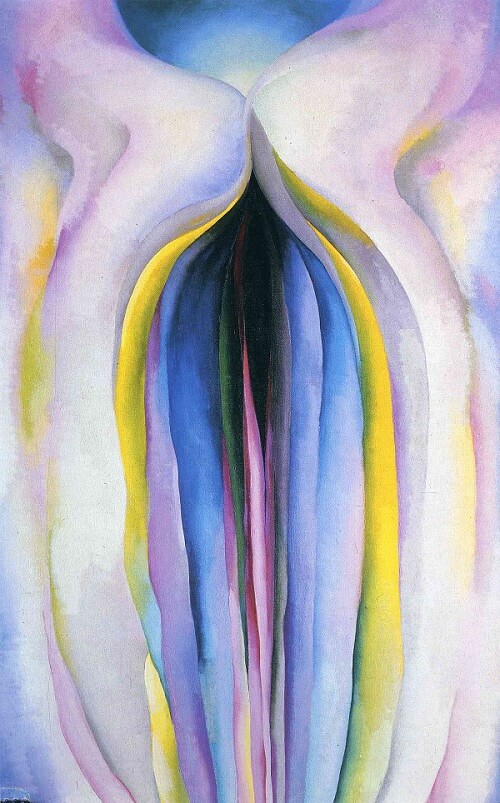Introduction:
In this masterpiece of Georgia O’Keeffe’s career, precisely delineated, undulating folds and lucid, three-dimensional forms work together to create an image of potent ambiguity suggesting either portrayals of plant life or, as some critics have argued, abstractions based on the female anatomy.
Many of the works produced by Georgia O’Keeffe during the 1920s and 1930s hover enticingly on the margins between figuration and abstraction. The notion that art could be entirely non-representational, or abstract, was widely explored in the decode from 1910, particularly in the work of the Russian painter Wassily Kandinsky (1866-1944) and the Dutchman Piet Mondrian (1872-1944). Although O’Keeffe did not visit Europe during this period, she would have been made aware of these trends in European modern art through her contact with avant-garde circles in New York. Her attention would also have been drawn to the Synchromist works of Stanton MacDonald-Wright (1890-1973), an early American supporter of abstraction. From early in her career, O’Keeffe experimented with abstract forms, most notably in the work Blue and Green Music. However, the key strength of O’Keeffe’s work often resided in its derivation from natural, organic forms, producing shapes and colours that evoke plant forms, flowers, and shells. O’Keeffe’s near-abstract, natural forms were highly influential on later painters.
Personal Reflection:
I studied Georgia O’Keeffe’s artworks from my undergrads. O’Keeffe specializes in the depiction of nature and plants, which is the type of thing I’m not good at — shaping and designing environments, so I went through a lot of O’Keeffe’s artworks. This painting is one of my favorites called Grey Lines with Black, Blue and Yellow. It depicts mysterious folds with three-dimensional shadows. Unlike the traditional flower shapes, the painting suggests either a depiction of a plant, but I also see elements that imply femininity.
My research focused on art-related affective theory. Contrary to the common stereotype of nature art, “Isn’t nature supposed to be moody?” , O’Keeffe makes the own choice. When I first saw this painting, I felt a strong sense of sadness. I would like to see how to use shape and color to express the feelings — this masterpiece is absolutely a great reference.
References:
Grey lines with black, blue and yellow, 1923 by Georgia o’keeffe. (n.d.). Retrieved January 17, 2023, from https://www.georgiaokeeffe.net/grey-line-with-black-blue-and-yellow.jsp#prettyPhoto




